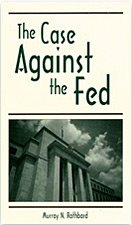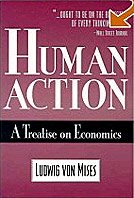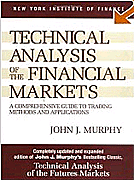The Gold Price-Fixing Conspiracy
The following is a sobering interview about a foul play on our money that every economically active individual walking on the surface of this planet should KNOW AND ACT UPON!
The Gold Price-Fixing Conspiracy
January 23. 2007
www.KitcoCasey.com
For many years now, a number of people in the financial arena have been alleging that there is an active conspiracy to suppress the price of gold. Some see it as a sinister backroom affair. Others claim that it’s just the way the world works, and that it happens right out in the open, if only you know where to look.
Among the latter is the Gold Anti-Trust Action Committee (GATA), the source of much of the material that has been written on the subject in recent years. In order to get their take, we sent our own Doug Hornig to interview Chris Powell, cofounder and secretary/treasurer of GATA.
GATA’s interest, Chris says, is in “public policy with regard to the rigging—or ‘regulation,’ if you prefer to be polite—of the currency markets, and specifically gold, by the central banks.”
“And we don’t have to speculate on what they’re doing, because they’ve confessed in several ways. Of course, it’s not like they’ve gone out of their way to let people know what they’re up to. They don’t go around to the major news organizations and ask them to understand it. But if you look reasonably carefully, you can find these confessions in the public record in various places.”
We asked Chris to define specifically who they are.
“The central banks and their agents, the bullion banks,” he replied. “The central banks include the ECB [European Central Bank], as well as those of virtually all the European countries, including
The world of international money movement can sometimes be confusing, even for those of us who follow it on a regular basis, so we wondered if the central banks are bullion banks, as well. Chris notes that they can be, but the definition is broader than that.
“A bullion bank is any investment house that deals in the gold market, buys or sells, borrows or lends gold. It need not be a ‘bank’ per se. It could be a big brokerage house like Goldman Sachs.”
That addressed who might be manipulating the market. But it raised more questions than it answered: What are they doing? How are they doing it? And why do they bother? Chris took the first one first.
“There’s a general currency market regulation scheme among the central banks, coordinated to some extent by the BIS, in which all the central banks are represented. They’ve pretty much acknowledged this.
“I first got onto this around 1998, when I began reading the writings of Bill Murphy [a futures trader and the co-founder of GATA]. He was ranting about what he saw as collusion to restrain the gold and silver price, which always seemed to involve the same suspects, Goldman Sachs and Morgan Chase and Citibank and institutions like that. After he went on like this for a few months, I emailed him saying there seemed to be a lot of circumstantial evidence supporting what he was saying, but if what he was saying was true, it would be against
“Those laws prohibit any collusion to interfere with the free market price of any good. Which is exactly what the banks are doing with regard to gold.” Chris and Bill created GATA in order to try to raise public awareness of what was happening and, if they could, to prod government regulators into doing something about it. A tough job, considering that a major government agency, the Treasury Department, was up to its eyeballs in the whole thing.
As the two men got to work, and began posting on the Internet, others who had been looking into the matter surfaced and contributed their own research and evidence to GATA.
“It’s embarrassing to admit,” Chris says, “that it took us a few years to figure out that the bullion banks are just fronting for the central banks, providing cover for them in the gold market. What we were complaining about was indeed happening, but it wasn’t an ordinary anti-trust violation, it was simply the cover being lent by nominally private entities to international central bank and treasury department policies.” That is, the central banks decide what they wish the gold price to be, the bullion banks carry out those wishes.
GATA believes that the cover under which central banks have been acting has now been blown so totally that only the wilfully ignorant can fail to see it. And they point to the public record to bolster their claim.
For instance, there were a few key words uttered by former Fed Chairman Alan Greenspan when he appeared before Congress in July of 1998. Greenspan was testifying as to why the Commodity Futures Trading Commission (CFTC) should not concern itself with regulation of derivatives traded in the over-the-counter market.
Greenspan argued that, “There is no reason to believe either equity swaps or credit derivatives can influence the price of the underlying assets any more than conventional securities trading does.”
One might think the chairman guilty of a surprising naïveté, or perhaps something a bit more sinister, but that’s a topic for another day. The relevance here is that gold, in addition to being a fundamental currency, is also a commodity, and as such the CFTC is responsible for oversight of its market.
Greenspan waved off the necessity for the CFTC to regulate gold derivatives, telling Congress to fear not, that the “central banks stand ready to lease gold in increasing quantities should the price rise.”
Oops. Bet he wishes he hadn’t let that slip. As Chris points out, “Greenspan was telling Congress that the purpose of gold leasing was not what the central banks had been telling the world—to earn a little money on a dead asset. The real purpose of gold leasing was to suppress the gold price. His remarks are still posted on the Federal Reserve’s Internet site.” [they are—we checked]
Other confirmations of the central bank price rigging scheme include a rather blatant admission from William R. White, head of the Monetary and Economic Department of the BIS. In late June of 2005, White delivered the opening remarks to the Fourth Annual BIS Conference on the “Past and Future of Central Bank Cooperation,” an elite gathering of “central bankers and academics.”
Among the latter were “economists and economic historians,” as well as, for the first time, “political scientists interested in political and other processes, and the development of institutions to support such processes.”
White’s speech enumerated five “intermediate objectives of central bank cooperation.” The fifth, and last, of these was “the provision of international credits and joint efforts to influence asset prices (especially gold and foreign exchange) in circumstances where this might be thought useful.” [emphasis added]
Useful to whom? Well, probably not to the average investor.
Then there is the Washington Agreement—signed in September of 1999 by representatives of the ECB and the central banks of
The alleged reason for the Washington Agreement was to control the amount of gold being sold by central banks, in order to keep the price high and protect the value of those banks’ holdings. That makes sense. It would, additionally, serve as a self-checking mechanism for the signatories, should any of them be tempted to sell off too much of their reserves.
But Chris isn’t buying.
“I think the reasons they gave were very disingenuous,” he says, “and in fact the opposite of what they were in there for. They said they were going to regulate the gold market by coordinating their sales and leasing in order to support the price. I would argue that they were in there to control the price and see that it didn’t get out of hand, and to protect their agents, the bullion banks, and the short positions the bullion banks had undertaken in gold at the behest of the central banks.”
In other words, to keep the gold price lower than it should be. Chris sees the agreement as a smokescreen, a way of deceiving all but the insiders as to what’s actually going on. It allows the central banks to say that they’re taking the initiative to limit gold sales, which is true of physical gold. But while they do that with one hand, with the other they ramp up the action in the derivatives markets—forward sales, options, swaps and shorts—thereby maintaining the artificially low price of gold.
That argument is bolstered by BIS statistics showing that gold derivative transactions ballooned from $234 to $354 billion, an all-time high, in the first six months of 2006. Conversely, though, it has been a very uneven progression. For all of 2005, derivatives activity actually fell. So a firm conclusion is difficult to draw.
Nevertheless, the argument that the central banks have worked hard to suppress gold has merit. To understand why the banks would do that, rather than acting in what on the surface would appear to be their own best interests, one has to understand what was going on behind the scenes during gold’s long bear market.
Chris explains: “I’m convinced that the gold price suppression scheme wasn’t really aimed at gold itself. Gold was the tail on the dog. It was aimed at boosting the government bond market, keeping interest rates down and making the dollar look strong.”
In order to accomplish that, the central banks had to give bullion banks some incentive to cooperate. Which they did.
“By the bullion banks shorting gold,” Chris says, “they deceived the world about the level of inflation and money supply growth, and basically they shorted gold to buy
Are they? we asked.
“That’s the zillion-dollar question,” Chris says. “The trouble is,
By double counting, we assumed he meant that they’re counting both physical and leased gold. That’s correct, he says, and jokes that “the actual disposition of Western central bank gold reserves is a more closely guarded secret than the plans for the construction of nuclear weapons, which are posted on the Internet today. You’ll never find out exactly where all the gold is and who really owns it.”
The question of ownership is an important one, and it really muddies the waters. Who owns what, and where, is complicated by the use of gold swaps. We asked Chris to explain what a gold swap is.
“Basically an exchange. Say the Bundesbank and the U.S. Treasury Department get on the phone and Treasury says to the Bundesbank, ‘hey, the gold price is getting a little high, we’d like to sell twenty tons over the next month to tamp it down, or at least lease twenty tons, could you do it from over there to keep our fingerprints off it?’ In return, they say, ‘we’ll give you title to twenty tons in the depository at
We had to say that it all sounded very convoluted. It must be difficult to coordinate.
"Not really," Chris says. "The central banks are constantly talking to each other and they're all members of the BIS, which compiles extensive data on gold reserves, as well as derivatives and leasing.
“They need to talk, because they have to know whose gold is going out into the futures pit today. And most Western central bank gold, or a lot of it anyway, is held in trust by the
“The
Thinking about all this, it seems to us that the Treasury Department, the Fed, and the European central banks were engaging in some mighty risky behavior. Chris agrees and says that, in fact, the house of cards almost came tumbling down when gold spiked in late 1999, in the aftermath of the Washington Agreement, and created a short squeeze.
With the Long Term Capital Management meltdown fresh in people’s memories (it had happened only a year earlier), the central banks feared that the gold squeeze could be even worse, taking down several major trading houses and possibly setting a whole row of dominoes falling.
In the words of former World Bank consultant Frank Veneroso, it was “an explosive gold derivatives crisis” and “the official sector intervened to prevent [it].”
The intervention worked. Gold retreated back under $300 and stayed there for two years. Traders were able to unwind their short positions without massive losses. Since then, of course, steadily rising demand has driven the gold price ever higher. Ongoing market rigging has been unable to suppress it, but has served to prevent the metal from finding its true equilibrium point, in Chris’ opinion. He believes that a day of reckoning will come. And what will that look like?
“Well, I don’t want to make any hard predictions about what will happen, or when,” he says. “But what I think is that we’re going to wake up someday and find out that the Western central banks have met—along with, maybe, some of the Asian central banks—and there are going to be new currency arrangements.
Maybe in the name of helping the poor countries, the central banks are going to be buying gold at $1,500 an ounce or something like that. It’ll probably happen overnight, because I don’t think the central banks can withstand a steady escape from the paper currencies into the monetary metals. If they do it overnight, everybody’s locked into the fiat system, there’s no getting out. Either you’ve got your gold and silver or you don’t, and there’s no incentive to get out of the hole central bank system.”
That sounded to us like a sudden and massive devaluation of the buck.
“Yeah,” Chris says, “I tend to expect that. In fact, that’s what the whole Plaza Agreement was about, back in the ‘80s under Reagan. It was a devaluation of the dollar. They don’t tell you these things are going to happen, they tell you they’ve already happened.”
Since up to that point, we’d been talking about the central banks and the executive branch of the federal government, we asked if Congress knows about all this, too.
“The leadership in Congress does,” Chris says. “We told them. A friend of a friend got GATA a private meeting with Dennis Hastert, speaker of the House. The GATA delegation met with Speaker Hastert in his office at the Capitol on May 10, 2000 and we laid it all out for him. Also for Spencer Bachus, the Alabama Congressman who chaired the subcommittee with jurisdiction over gold and silver. Not that we really needed to. A couple of months later, I was able to deduce that we’d been given that meeting not because the speaker wanted to hear what we had to say, but rather wanted to know how much of this was leaking out, how much was known, how much of the whole thing was compromised. I can’t explain exactly how I know that, because it would put my source at risk, but trust me, I do.
“Look, right now the Comptroller General of the
Forewarned is forearmed.
In Chris’ words, either you’ve got your gold and silver or you don’t.
Labels: GATA, gold, market manipulation















![[Most Recent Quotes from www.kitco.com] [Most Recent Quotes from www.kitco.com]](http://www.kitco.com/images/live/t24_au_en_usoz_6.gif)
![[Most Recent Quotes from www.kitco.com] [Most Recent Quotes from www.kitco.com]](http://www.kitco.com/images/live/au_go_0030_ny.gif)
![[Most Recent Quotes from www.kitco.com] [Most Recent Quotes from www.kitco.com]](http://www.kitco.com/images/live/au_go_0365_ny.gif)
![[Most Recent Quotes from www.kitco.com] [Most Recent Quotes from www.kitco.com]](http://kitconet.com/charts/metals/silver/t24_ag_en_usoz_4.gif)

















1 ΣΧΟΛΙΑ (COMMENTS):
Paidia,
Mhn panikovalete ton kozmo. Simfono oth olloi prepei na exoun xrhso sthn katoxh tous.....alla mexrh to polh 10% ton apothematwn sou........oxi parapano.
A bull is a bull, is a bull.....an mboume se ena bull market me to xrhso....kai ta epitokia twn trapezwn ftasoun sta ipsh......to xrhso tha exei thn idia moira me ths kainourgies mezonetes sto Xalandrh.....
Simfono oth o kathenas prepei na exei sthn katoxi tou kamposes xruses lires.......gia kalo h kako. Ean ftasoume se simio pou 'mono to xryso tha metrah'....me 100 lyres tha theorithis plousios......
Post a Comment
<< Home